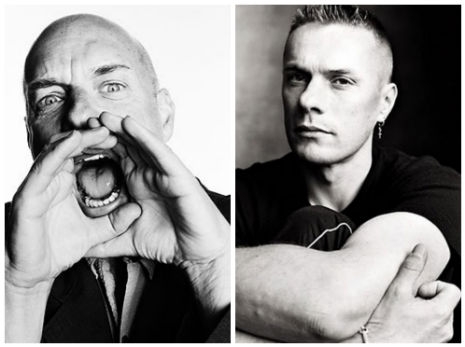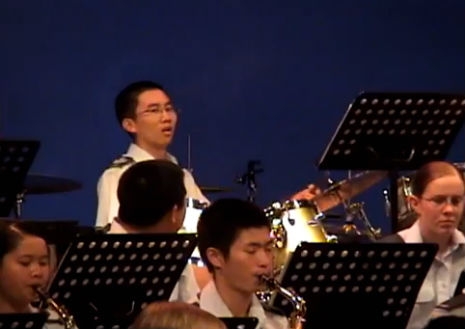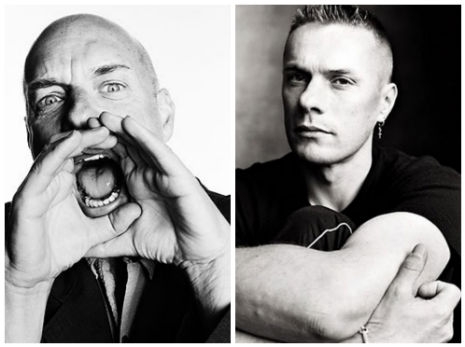
The April 25, 2011 issue of the New Yorker contained a fascinating article about David Eagleman, the celebrated neuroscientist and director of the Laboratory for Perception and Action at Baylor College of Medicine in Houston. The title of the piece is “The Possibilian: What a brush with death taught David Eagleman about the mysteries of time and the brain.” It’s far too complex an essay to summarize in a blog post, but if you enjoy pop science articles (and Doctor Who) as much I do, this one is an absolutely terrific read.
What I wanted to call your attention to here is an incredible event described in the article where a bunch of professional drummers, invited by Brian Eno and from some of the biggest bands in the world, allowed Eagleman to observe them. They were outfitted with EEG units on their heads in special workstations for the data collection. The tests were conducted on a laptop. A software program asked the drummers to do four things: Keep a steady beat; compare the length of two tones; synchronize a beat to an image and compare different rhythms to one another.
Burkhard Bilger writes:
Early this winter, I joined Eagleman in London for his most recent project: a study of time perception in drummers. Timing studies tend to be performed on groups of random subjects or on patients with brain injuries or disorders. They’ve given us a good sense of average human abilities, but not the extremes: just how precise can a person’s timing be? “In neuroscience, you usually look for animals that are best at something,” Eagleman told me, over dinner at an Italian restaurant in Notting Hill. “If it’s memory, you study songbirds; if it’s olfaction, you look at rats and dogs. If I were studying athletes, I’d want to find the guy who can run a four-minute mile. I wouldn’t want a bunch of chubby high-school kids.”
The idea of studying drummers had come from Brian Eno, the composer, record producer, and former member of the band Roxy Music. Over the years, Eno had worked with U2, David Byrne, David Bowie, and some of the world’s most rhythmically gifted musicians. He owned a studio a few blocks away, in a converted stable on a cobblestoned cul-de-sac, and had sent an e-mail inviting a number of players to participate in Eagleman’s study. “The question is: do drummers have different brains from the rest of us?” Eno said. “Everyone who has ever worked in a band is sure that they do.”
The drummers study was inspired by an anecdote Eno told Eagleman:
“I was working with Larry Mullen, Jr., on one of the U2 albums,” Eno told me. “ ‘All That You Don’t Leave Behind,’ or whatever it’s called.” Mullen was playing drums over a recording of the band and a click track—a computer-generated beat that was meant to keep all the overdubbed parts in synch. In this case, however, Mullen thought that the click track was slightly off: it was a fraction of a beat behind the rest of the band. “I said, ‘No, that can’t be so, Larry,’ ” Eno recalled. “ ‘We’ve all worked to that track, so it must be right.’ But he said, ‘Sorry, I just can’t play to it.’ ”
Eno eventually adjusted the click to Mullen’s satisfaction, but he was just humoring him. It was only later, after the drummer had left, that Eno checked the original track again and realized that Mullen was right: the click was off by six milliseconds. “The thing is,” Eno told me, “when we were adjusting it I once had it two milliseconds to the wrong side of the beat, and he said, ‘No, you’ve got to come back a bit.’ Which I think is absolutely staggering.”
Read: The Possibilian: What a brush with death taught David Eagleman about the mysteries of time and the brain (The New Yorker)








